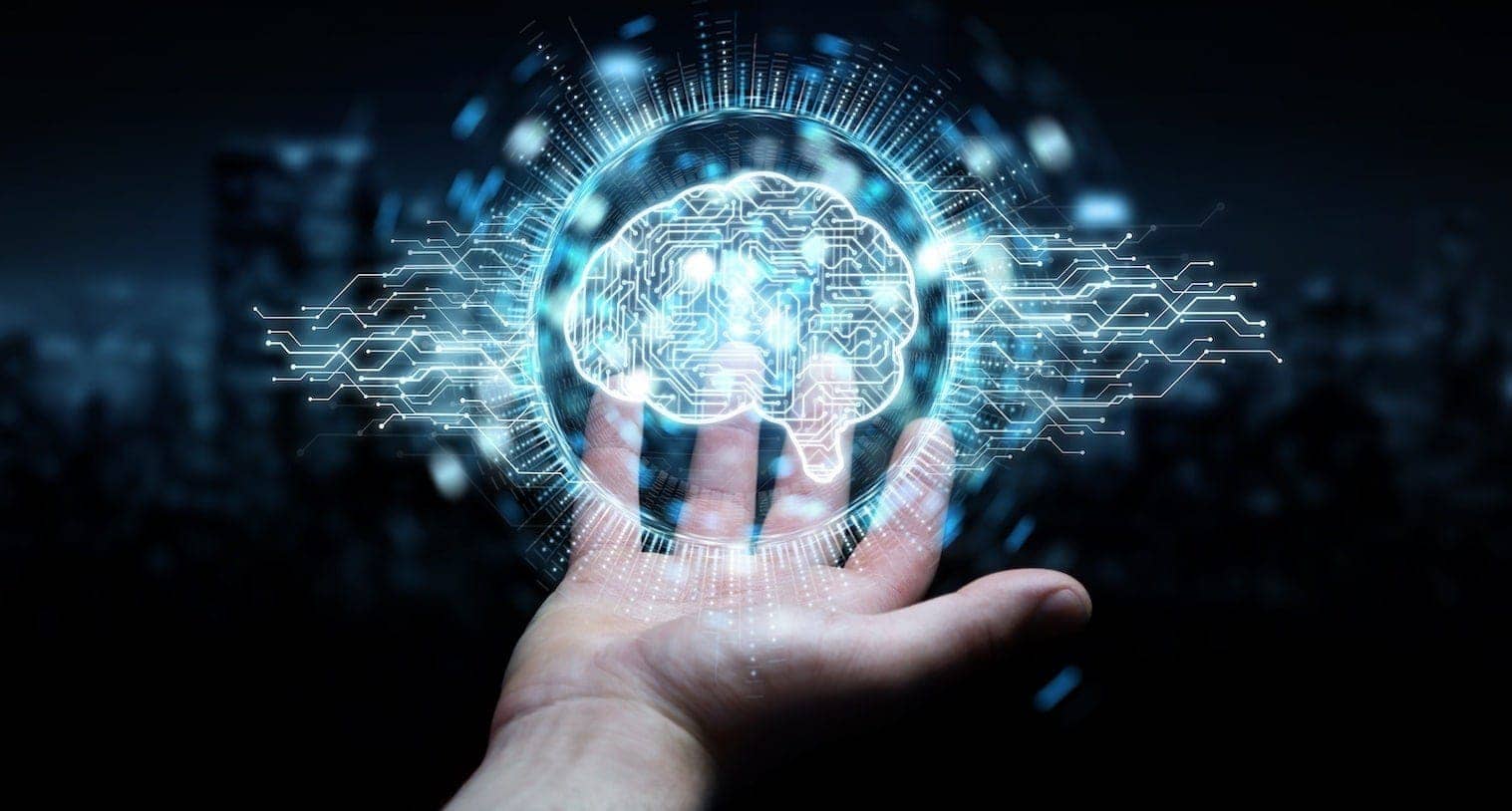The 4 main types of AI in HR work – and how you can profit
Learn how AI in HR can streamline processes, provide data-driven insights and enhance decision-making. Learn about the types of AI technologies like generative AI, machine learning, natural language processing and predictive analytics that will help your HR team thrive.

In order to get the most out of your AI in HR, it’s important to make sure you’re getting all of these AI terminologies right and how each can factor into your day-to-day HR work. Let’s look at some of the more popular ones:
Contents
1. Generative AI
Generative AI is the ability to create new emails, reports, documents, text messages and so on. Believe it or not, this type of AI is still in its infancy even if it’s being utilized across the board now. Look at it as a skilled artist who can paint a picture or write a story from scratch, using the inputs it’s given.
For an HR professional, imagine you have to draft a new company policy. A generative AI tool could help you write it. You provide the key points, and the AI generates a well-structured, professional document. This could save you valuable time and effort on routine writing tasks. More advanced technologies can write all that stuff from scratch.
Consider employee onboarding. Each new hire needs to understand their role, team dynamics and company culture. Generative AI can take your existing company information and create personalized onboarding materials tailored to each new employee’s role and department, making the onboarding process more engaging and effective.
Generative AI can also assist with your internal communication needs. If you need to communicate a new company strategy or initiative, the AI can draft concise, clear messages for you. This ensures consistency in communication, saving you time and reducing the risk of misunderstandings.
Think of generative AI as your virtual assistant. It helps speed up your work and free up the resources normally allocated to menial work, allowing you to focus on the more strategic aspects of your role.
Many of the most advanced HR software systems – including Workable – incorporate generative AI technologies to help you streamline your HR processes.
2. Machine learning
This kind of AI uses algorithms to identify patterns and make predictions based on past behavior. Effectively, you’re plugging in all your existing data – including employee tenure, time-off requests, promotions, salaries, performance reviews, and so on.
You then use that database as a baseline for your machine to ‘learn’ when a candidate is ready to leave their position and why, how much they’ll be paid in the future and how well they will perform on the job. That way, you can get ahead of challenges that may arise and strike when the iron is hot – ultimately making smarter decisions on how you allocate your company resources.
That’s machine learning – or natural language processing – in a nutshell. It’s part of a larger family called deep learning, which uses large neural networks to solve problems that are too complex for humans to solve.
Which brings us to the bigger picture of machine learning: ML can be used to train computers to do tasks that humans can do – like recognizing faces or speech patterns – and it’s also being used in HR applications like recruiting automation and risk assessment tools. The long-term benefits of machine learning for HR include:
Machine learning helps companies make smarter hiring decisions by providing them with data-driven insights into how candidates fit into their company culture, as well as their overall performance potential at each stage in the hiring process. This means fewer bad hires and more successful onboarding experiences for both new hires and current employees alike.
3. Natural language processing
That thing we said up there about recognizing faces or speech patterns? Natural language processing (NLP) falls into a similar bucket. It’s the use of computers to understand human language.
NLP is a subset of AI and can be used in HR for many things such as, for example, sentiment analysis. In other words, NLP analyzes text from emails or other written communication to determine whether an employee is happy or unhappy with their job, based on what they say about it in their writing. This is helpful because it allows you to detect problems before they become issues that need addressing by HR staff or managers.
For example, if an employee writes “This company stinks” in an email message sent out to all employees (and cc’ed everyone), then that may indicate that there are problems within your company culture that need fixing ASAP.
Similarly if someone writes “I love working here!” then chances are good things are going well overall at this point too – but if both sentiments were expressed at once then maybe something else needs looking into? You never know until you look into it though so why not start investigating now? (Of course – these would all be anonymously collected. We’re not asking you to be Big Brother here.)
Related: Learn more about existing and potential technologies in our article on AI, ChatGPT and the human touch in hiring.
4. Predictive analytics
Similarly to machine learning above, predictive analytics can help human resources make better hiring, performance management and compensation decisions. Imagine it as your crystal ball, giving you insights into what might happen next in your workforce.
When it comes to hiring, predictive analytics can analyze past hiring data and determine which qualities led to successful employees. It might be a specific skill set, educational background, or even personality traits. With this information, you can fine-tune your recruitment strategy, focusing on candidates who are most likely to thrive in your company.
In terms of performance management, predictive analytics can go beyond simple evaluations. By studying past performance data, it can help identify trends, strengths, and areas for improvement. Perhaps certain types of training lead to improved performance, or maybe employees with flexible work schedules are more productive. This kind of insight can guide you to make informed decisions about training, development, and work policies.
Predictive analytics also plays a crucial role in compensation decisions. By analyzing data such as market trends, industry standards, and employee performance, it can help you develop a fair and competitive compensation strategy. This not only helps you retain top talent but also attracts new talent to your organization.
Hypothetical examples
Let’s take the example of two companies – Zigzag and Xerxes. Both are startups in marketing and sales technology in Boston, and both are using AI tools to better understand what’s going on in their workforce.
First, Xerxes finds that they have very low attrition rates compared to most other startups in Boston – only 2% per year compared with an industry average rate of 5%. Its employees also have high job satisfaction scores indicating that most everyone loves working there. Xerxes’ HR team has been able to tangibly determine this without needing to go to Glassdoor or another employer review site.
Through their ML, NLP, and analytics tools, the HR team is able to really identify what’s working for them. Turns out that, via anonymous surveys that are only identifiable by location and department, the people in Geoffrey’s and Talia’s teams are noticeably sticking around longer, and moreover, teams that are more diverse are happier in their work. Xerxes’ HR team now knows what to do – incentivize Geoffrey and Talia to stay longer and encourage them to (continue to) build out diverse teams.
Meanwhile, Zigzag’s not doing so great. Their employees are leaving in droves – even within six months of joining. The HR team has already identified a link between low employee engagement scores and high attrition rates.
But now, they use the same AI tools as Xerxes to dig a little deeper, and they’ve learned that the people who are leaving are mostly top performers who want more challenging work assignments or higher salaries.
Flip side: those type-A personalities are leaving because they’re just not getting the opportunities for career growth or L&D at Zigzag. Cue lost productivity and a pretty painful ding in the company pocketbook. But now that the HR team knows this, they can predict who in the company may be a flight risk, and when and why.
Since it’s cheaper to retain your top stars than to find and hire new ones, Zigzag’s HR team presents a plan to the C-suite proposing higher salaries across the board, raises for top performers, a robust L&D strategy and a well-crafted succession plan to preempt those challenges.
Look at that. Just two examples. There are many more out there where HR teams are using – or can use – AI tools in their work. Don’t fret – it won’t replace your work, but rather, grow the value of it.
Related: How AI can enhance human skills and collaboration at work
AI in HR: your newfangled tool for success
This is a lot to take in – but if you use AI in HR processes, you’ll find your HR team can thrive. It’s not just about predictive analytics and machine learning and all that techy gobbledygook – it’s about fine-tuning your HR work so that you’re able to do a better job day to day.
More so, you can assert your value in the company in the eyes of those who run the company, by providing juicy reports and insights and strategies that have a clear link to the bottom line. Execs love that, and you’ll benefit in your role.
Frequently asked questions
- What is generative AI in HR?
- Generative AI creates content like emails or reports to save time on routine writing tasks; it can also generate tailored onboarding materials for new employees.
- What are the benefits of machine learning in HR?
- Machine learning helps make smarter hiring decisions by providing insights into candidates' fit with company culture and predicting their job performance potential.
- How is natural language processing used in HR?
- Natural language processing (NLP) analyzes text from written communication to determine employee satisfaction levels based on what they say about their job experience.
- How does predictive analytics benefit hiring practices?
- Predictive analytics analyze past hiring data to identify qualities leading to successful hires - information which aids recruitment strategies focusing on high-performing candidates.
- Will AI replace human resources professionals?
- AI enhances rather than replaces human elements within an effective workforce strategy – streamlining work while allowing more focus on strategic aspects unique to humans.




